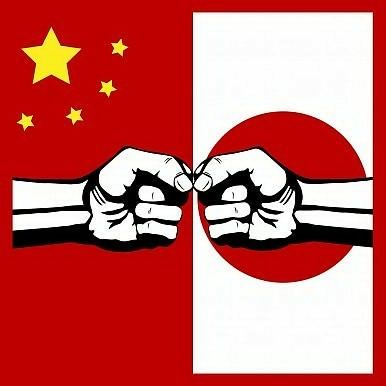Overview
As everyone knows, China as well as japan are two of the best economies in the Asia continent and they still continue to do so. You might wonder that there should be something common in the growth structure and module of both the countries. Well you are right, there are a lot of common economic elements between the two countries which result in their great economies.
Here below are some of those many elements.
In 2016, when China surprised the world with a better-than-expected GDP, Japan’s central bank was forced to lower its growth outlook.
In analysis, forecasters were extremely slow to recognize just how much Japan’s growth potential had dropped after the crash and how long lasting the effects were.
Those overly optimistic growth forecasts of Japan, persisted long after the crash and ignored factors such as an aging population. Something similar is happening with China watchers. While medium-term forecasts have been mostly lowered in recent years, they still look optimistic when demographics are considered.
But even as China’s economy shows signs of recovering from a sharp slowdown, it remains vulnerable to the type of crash that dragged Japan into decades of falling consumer prices and stagnant growth.
Oxford Economics Ltd. and HSBC Holdings Plc, warned of the similarities between China today and Japan in 1990.
Japan enjoyed rapid growth through the 1980s until the bursting of a real-estate and stock-market bubble in 1990. China too, has enjoyed decades of fast debt-fueled growth that created a steep run up in real estate prices and, over the past year, one of the world’s biggest ever stock market rallies.
The Japanese economy had experienced the birth of an asset issue in the end period of 1980s, which was followed by a long slowdown after 1990. A glitch is also eventually forming in China’s real estate market today, and its development in the future is attracting wide attention.
One of the main reasons for this is just like what previously happened in Japan, expansionary macroeconomic policies are being taken by the government of China today to achieve a growth rate, which has fallen significantly on the back of labor shortages and is causing the asset bubble.
Also, liquidity has expanded as a result of the authorities actively intervening in the foreign exchange market to curb the rise in exchange rates. In Japan, the yen appreciated sharply following the Plaza Accord in 1985. In the wake of the conclusion of the Louvre Accord in February 1987, which sought to stabilize the U.S. dollar among the G7 member countries based on the recognition that the goal of correcting the strong dollar had been achieved, the Bank of Japan began to conduct a large-scale dollar-buying intervention. Together with monetary easing, this boosted liquidity which in turn fueled the asset bubble. In China, the market intervention undertaken to curb the rise in the yuan, also has become a factor in expanding liquidity and in trigger rising real estate prices.
In addition, apart from conventional bank lending funded by bank deposits, shadow banking is used as a way to get around the regulations of the authorities. In Japan during the bubble period, significant property-related lending was provided through non-banks such as jusen, or housing loan companies, that were beyond the reach of the authorities supervision. This accelerated the ballooning of the real estate bubble and aggravated the bad debt problem after the bubble burst. In today’s China, banks and trust companies are also pouring some of the funds they have raised by selling wealth management products and trust products, respectively, into the real estate market.
Lastly, although the prices of assets (real estate and stocks in the case of Japan, while real estate only in the case of China) are rising significantly, inflation has remained relatively low. This delays the shift to a tighter monetary policy.
Conclusion
So, concluding, we can see that China is now following Japan’s growth module that it was followed by Japan in the 1980s. Now we just have to see if China will be able to avoid all the mistakes that Japan made back then, in order to avoid a major economic catastrophe in the 21st Century.
By Vatsal Mehta


